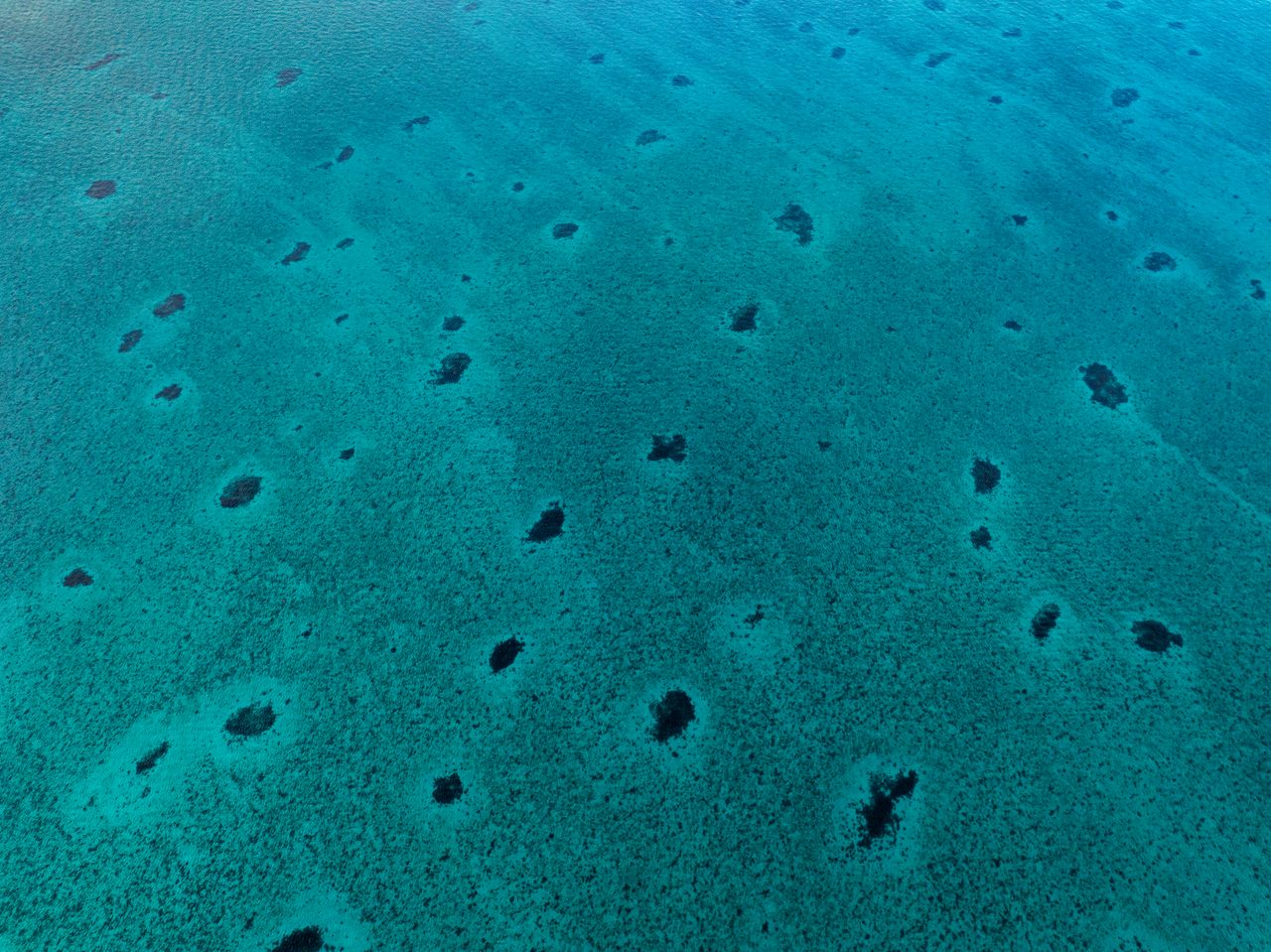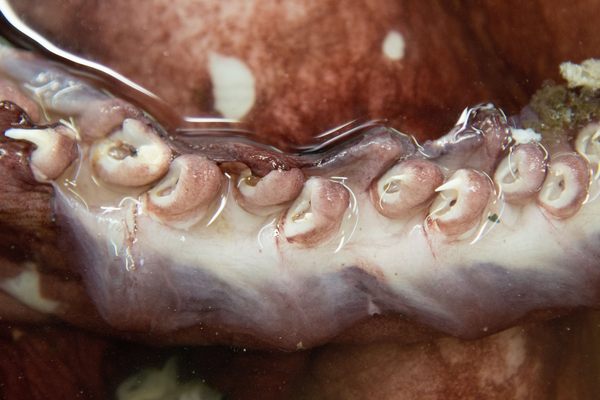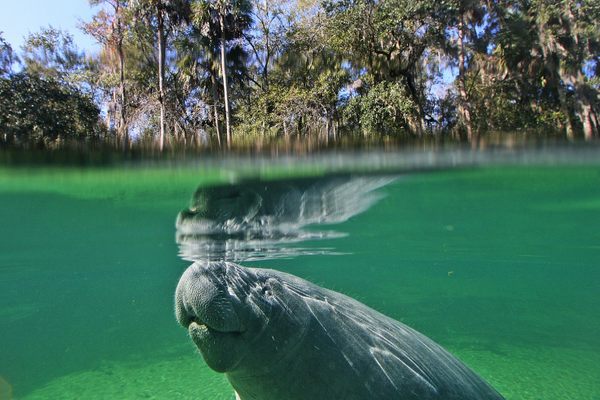Why Holes at the Bottom of the Ocean Disappear and Reappear
What lurks below doesn’t always stay beneath the sand.
In the North Sea just off the coast of Germany, the water is dark and murky. Full of swirling sediments caused by frequent storms, the depths here are difficult to peer through—yet the obscured ocean floor is exactly what scientists here in the German Bight are trying to study. That’s because the sand at the bottom of these waters is full of holes.
About 90 feet below the surface are round depressions with diameters averaging around 60 feet wide, but just about four inches deep. When these so-called “pockmarks” in the German Bight were first described in 2017, researchers were shocked to see that these shallow pits seemed to emerge and disappear within a couple of months. They theorized they might have formed as pockets of methane gas rise through the sediment and vent out into the water, and then filled in again as storms dump new sediment in. But in new research drawing from an expedition in May 2021 and another research cruise later that year, scientists lay out evidence that these marks may have actually been caused by an animal duo: porpoises and eels.

Based on knowledge from previous work in the North Sea, Jens Schneider von Deimling, a geoscientist specializing in seafloor mapping at Kiel University, was quite sure that the methane theory couldn’t work for this area. Methane can be responsible for some pockmarks on the ocean floor, but this part of the German Bight didn’t seem suitable for those conditions. “You have strong bottom current, strong storm events, and you have sand that’s quite open,” he says. All the factors you’d typically need in order for methane to accumulate in large volumes just weren’t there.
To confirm these suspicions, Schneider von Deimling and his team set out on their research cruises and used sound-based technologies to try to detect the presence of gasses in the area and also evaluate the shape of the seafloor and the many different depressions. They were not able to detect any methane traveling through the water column, but they also realized that the shape of these large, shallow pits did not really resemble other gas-caused conical divots.

The team then turned to satellite imagery and behavioral biology to analyze the tidal currents, and they noticed some related animal behavior. It turns out populations of harbor porpoises hunt and feed on the sand eels that live buried in the sediment. The pits form over time as the porpoises burrow for the fish, but also as the eels squirm through the sediment or emerge from their holes to get away. They then began to extrapolate—looking at a map, they determined: “Well, if this is true, then this should also occur here and there and there,” Schneider von Deimling says. They set off on what became their second research cruise and found more and more of these pits in the places they predicted. “That’s why we are confident the hypothesis is true,” he says.
“I think this is right on,” says Charles Paull, a marine geologist at the Monterey Bay Aquarium Research Institute in California. In marine geology, “the word ‘pockmark’ is often taken as synonymous with fluid and gas venting,” he says, where it’s assumed that a depression like that must have formed just one way. But “it’s a mistake to assume that all depressions on the seafloor that fit a certain size and shape are caused by one mechanism,” Paull adds, and this is a good example of researchers really looking at the evidence to break down whether an explanation of methane moving up through the sediment is really plausible.

What would truly confirm this theory of porpoises and sand eels making these depressions would be photographic evidence, “which is nearly impossible in the North Sea,” says Schneider von Deimling, thanks to its murky quality. “Plus, the harbor porpoise is a shy animal.” Seals are another potential hunter of sand eels in the Bight, but more research is needed to know if they’re involved in the making of these pits.
To further link these seafloor depressions and the sand eels, the team is working on future research projects. They hope to map out the sand eels in the area to see if they correlate to other pits. As Schneider von Deimling says, “We probably have greatly underestimated the function that biological life has on the sediment and the morphological imprints on the seafloor.”





















Follow us on Twitter to get the latest on the world's hidden wonders.
Like us on Facebook to get the latest on the world's hidden wonders.
Follow us on Twitter Like us on Facebook